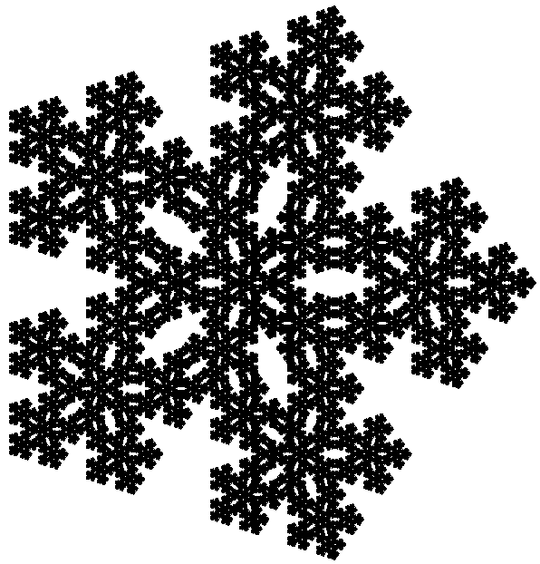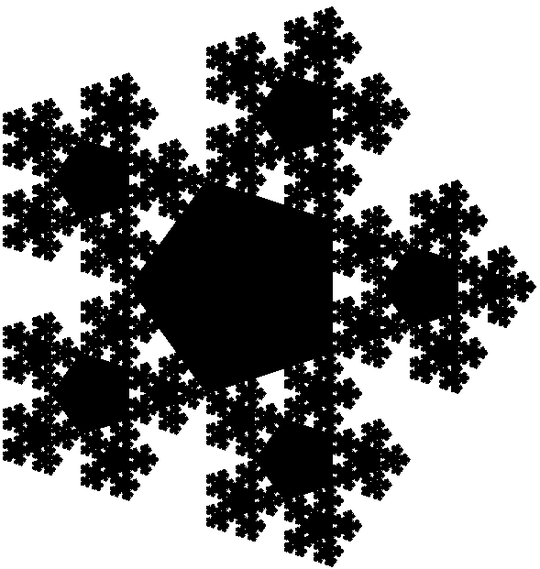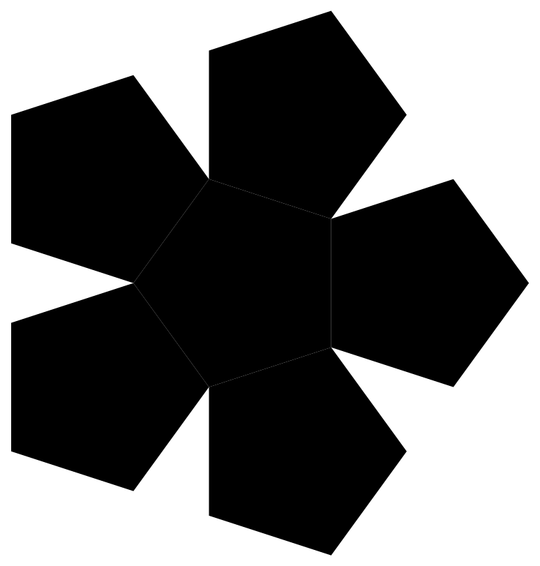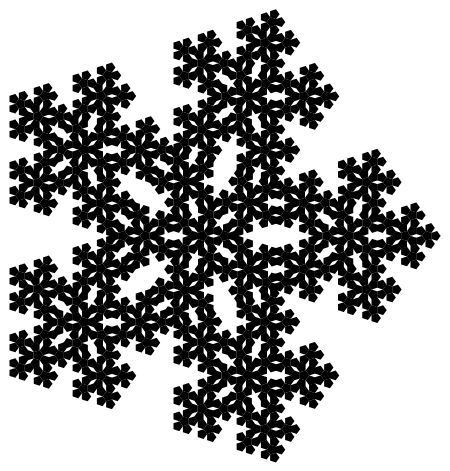25
1
First of all ... I would like to wish everyone a Merry Christmas (sorry if I am a day late for your timezone).
To celebrate the occasion, we are going to draw a snowflake. Because the year is 2015 and Christmas is on the 25th (for a large portion of persons), we will draw a Pentaflake. The Pentaflake is a simple fractal composed of pentagons. Here are a few examples (taken from here):
Each Pentaflake has an order n. The Pentaflake of order 0 is simply a pentagon. For all other orders n, a Pentaflake is composed of 5 Pentaflakes of the previous order arranged around a 6th Pentaflake of the previous order. For example, a Pentaflake of order 1 is composed of 5 pentagons arranged around a central pentagon.
Input
The order n. This may be given in any way except that of a predefined variable.
Output
An image of the order n Pentaflake. Must be at least 100px wide and 100px long. It may be saved to a file, displayed to the user, or outputted to STDOUT. Any other form of output is not allowed. All image formats existing before this challenge are allowed.
Winning
As codegolf, the person with the least number of bytes wins.








3-1 because snowflakes only have 6 fold symmetry! =D – flawr – 2015-12-25T16:30:18.987
@flawr According to this article only about .1% of snowflakes actually have 6-fold symmetry ... or any symmetry at all. However, those snowflakes that do have symmetry can have 3-fold symmetry in addition to 6-fold symmetry :P
– TheNumberOne – 2015-12-26T14:27:02.4504
Well this article only studied way less than .1% of all snowflakes, and it is meaningless anyway, as they only studied american snowflakes. I bet metric snowflakes are way more symmetrical! (PS: Beautiful images! Snowflake #167 is especially interesting!) (I just noticed that metric snowflakes must have 10-fold symmetry.)
– flawr – 2015-12-26T14:30:41.510Is it necessary to have a self-contained function as an answer? I could shave off a few bytes if matlab scripts are also allowed (i.e. just a sequence of commands rather than a function). I'll edit according to this, and revert if it's not OK after all. – Andras Deak – 2015-12-27T00:01:59.967
1It will be okay as long as it outputs using one of the above methods. However,
ncannot be predefined in your script file. You can readnfromSTDIN, prompt it from the user, take it as a function / commad line argument ... basically anything you want except for directly embedding it in your code. – TheNumberOne – 2015-12-27T00:20:28.3931Don't want to +1 this because it has 25 :( – The_Basset_Hound – 2016-01-06T03:23:40.167